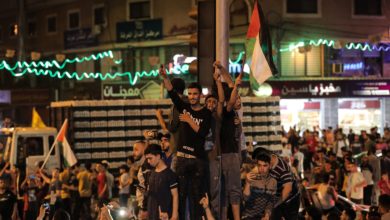In the wake of a foiled mail bomb plot that originated in Yemen, the Obama administration is debating putting under CIA control a U.S. military “hunter-killer team” already secretly operating in the impoverished Arab nation. In a report published by the Wall Street Journal on Nov. 1, unnamed U.S. officials were quoted saying that support was growing within the military and the administration to shift control of these assassination units to the CIA, because it would allow the units to kill faster and with greater secrecy. Similar teams under the control of the CIA are operating in Afghanistan and Pakistan.
 Students demand release of al-Samawi, Oct. 31, Sana’a, Yemen |
According to U.S. officials, this shift in control over the existing hunter-killer teams would give the U.S. “greater leeway” to attack elements in Yemen deemed by the U.S to be “militants.” The plan would also “provide deniability to the Yemeni government because the CIA operations would be covert.”
The Yemeni government of Pres. Abdullah Ali Saleh is engaged in two internal conflicts, one in the north with the Houthi insurgency and one in the south against socialist-oriented secessionists. The government has never been particularly strong outside of the center, relying on support from local tribal authorities. The population is generally anti-imperialist, making the Saleh goverment’s alliance with the U.S. in the so-called “war on terror” unpopular.
The government has further signaled its desire to cooperate with the U.S. with in a recent call to bring in U.S. citizen Anwar al-Awlaki “dead or alive.” Al-Awlaki is a cleric whose videotaped sermons urge “holy war” against the U.S. In a surprise move, he was charged last week as a co-defendant as part of the trial of another man, µHisham Assem§, who has been accused of killing a Frenchman in an Oct. 6 attack at an oil firm compound. Judge Mohsen Allwan ordered al-Awlaki to be “arrested by force, dead or alive” after he failed to appear for the start of the trial. Al-Awlaki’s name and that of a cousin, Othman al-Awlaki, were added as defendants in absentia. The CIA has orders to kill al-Awlaki.
The mail bomb plot began in Sana’a with two packages addressed to locations in Chicago that were dropped off at FedEx and UPS on Hadda Road by an individual who gave the cell phone number of Hanan al-Samawi, a 23-year-old Sanani university student. Eventually the plot was discovered due to an informant. Al Qaeda in the Arabian Peninsula has taken credit for the plot.
Yemeni security forces arrested al-Samawi, a computer science major, and her mother as suspects in the bombing case. This sparked outrage on the campus of the University of Sana’a, where hundreds of students demonstrated for her release Oct. 31. “Am I terrorist if I have lost my ID card?” one poster read. Yemeni security forces surrounded the campus that afternoon, according to Ridhwan Al-Masodi, head of the student union.
Al-Samawi was released the evening of Oct. 31, acknowledged to be a victim of identity theft. “I thank everyone who stood by me. I will never forget their support,” she said after being released with her asthmatic mother. A planned demonstration on campus Nov. 1 turned into a joyful celebration of her release, according to a report in the Yemen Times.
“Finding her phone number on the parcel is not enough evidence of her involvement,” said Abdulrehman Barman, a lawyer at the National Organisation for Defending Rights and Freedoms, in Sana’a. Barman said, “We should not let the security forces use the pretext of terrorism to violate human rights.”
The situation in Yemen is complex. In the north, there is the ongoing Houthi insurgency. The Houthi rebels are members of the Zaydi branch of Shi’ite Islam. The majority of the population in the region identify with Zaydism, which is only found in Yemen.
The north was ruled by a Zaydi feudal theocracy until 1962, when a republican revolution overthrew the former ruling class and implemented capitalist development in the impoverished and underdeveloped nation.
In the aftermath of the revolution, an eight-year civil war broke out in which Britain, Saudi Arabia and the United States provided material aid to the former ruling classes, while Egypt sent troops with Soviet material aid to the revolutionary forces.
Meanwhile, in the south, the Peaceful Southern Mobilization Movement has been fighting for secession from the central government.
Southern Yemen was colonized by Britain until 1967, when the occupiers were forced to withdraw by socialist revolutionaries who subsequently founded the People’s Democratic Republic of Yemen.
Northern and southern Yemen briefly united in 1990, but a civil war quickly developed when the southern forces attempted to secede in response to the domination of the pro-capitalist north. The southern forces were ultimately defeated and forced to reunite with the north in 1994.
Since that time, the Yemeni central government has pursued economic integration into the capitalist world, allying itself with U.S. interests in the region and collaborating with the “War on Terror.” The inevitable result has been an ever-increasing wealth gap between rich and poor.
U.S. imperialism fears that the Yemeni government could be greatly weakened or overthrown, resulting in large parts of the mountainous country becoming strongholds for forces opposed to U.S. domination of the region. Having secret assassination teams in Yemen, whether under the control of the U.S. military or the CIA, is a violation of Yemen’s sovereignty and a dangerous step towards further U.S. intervention in the nation.





